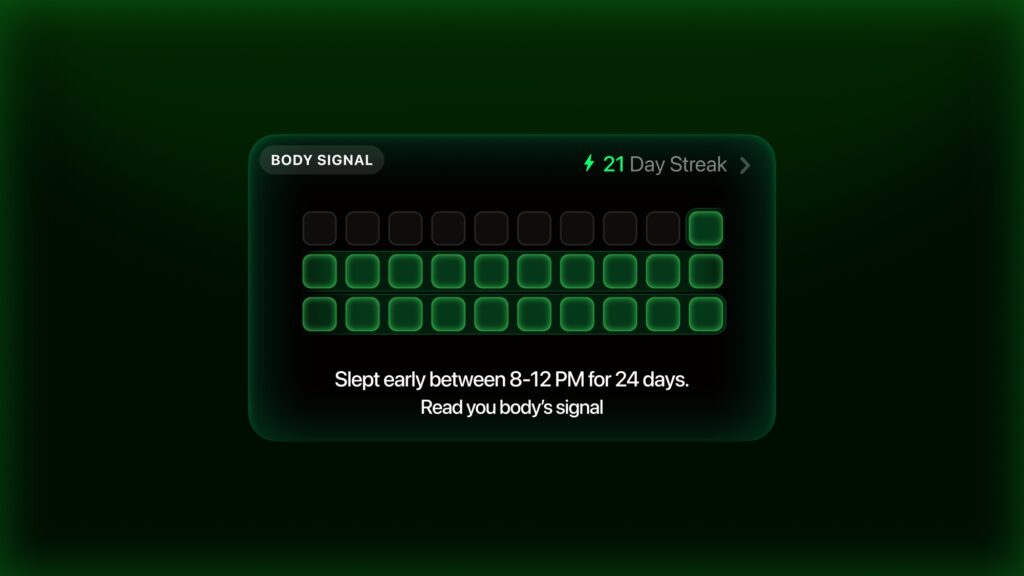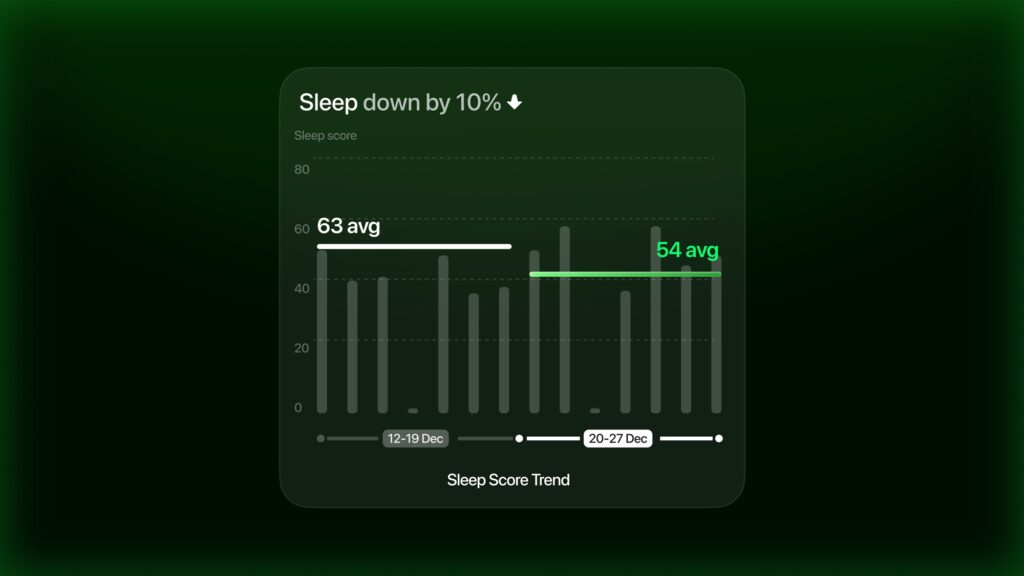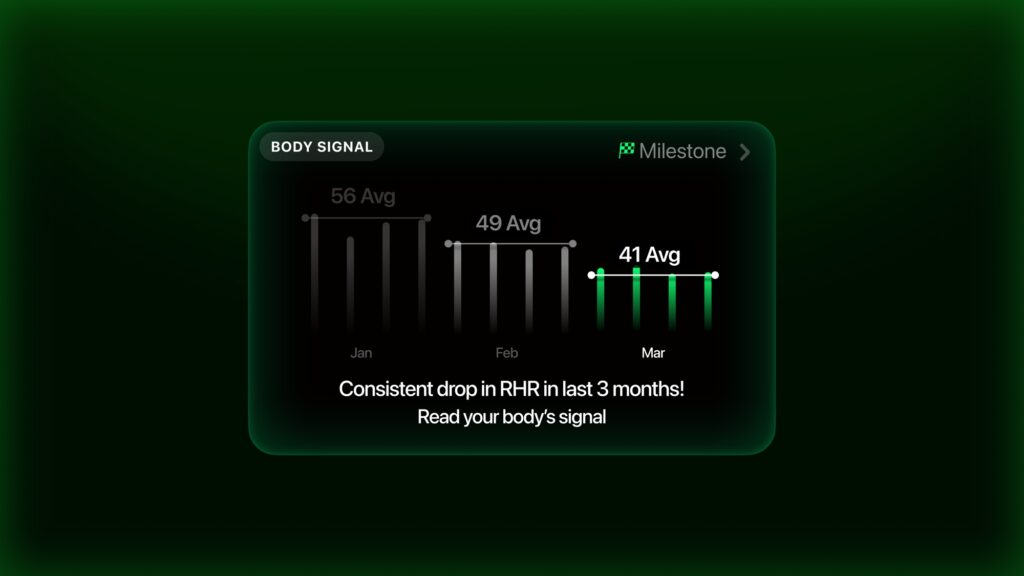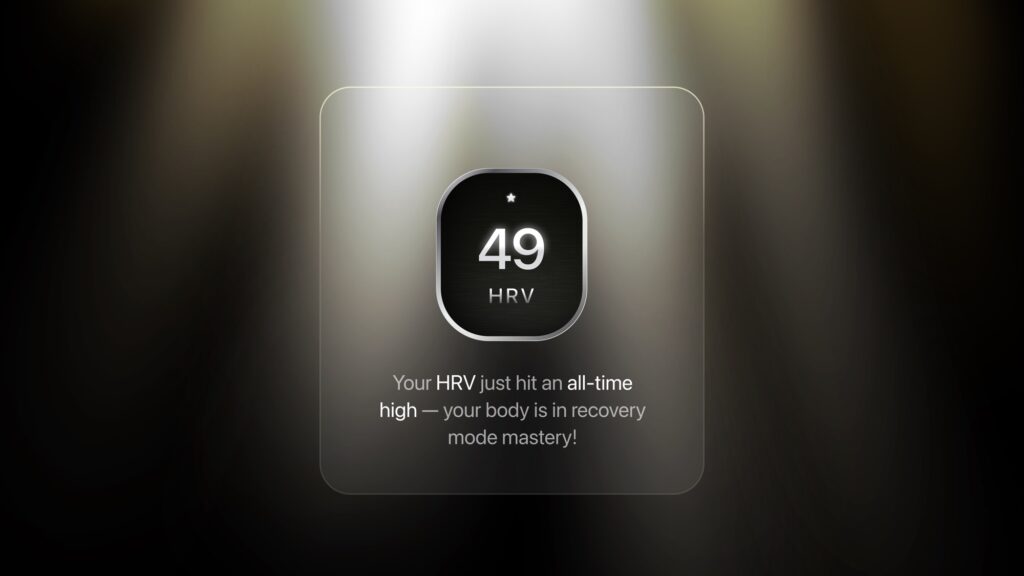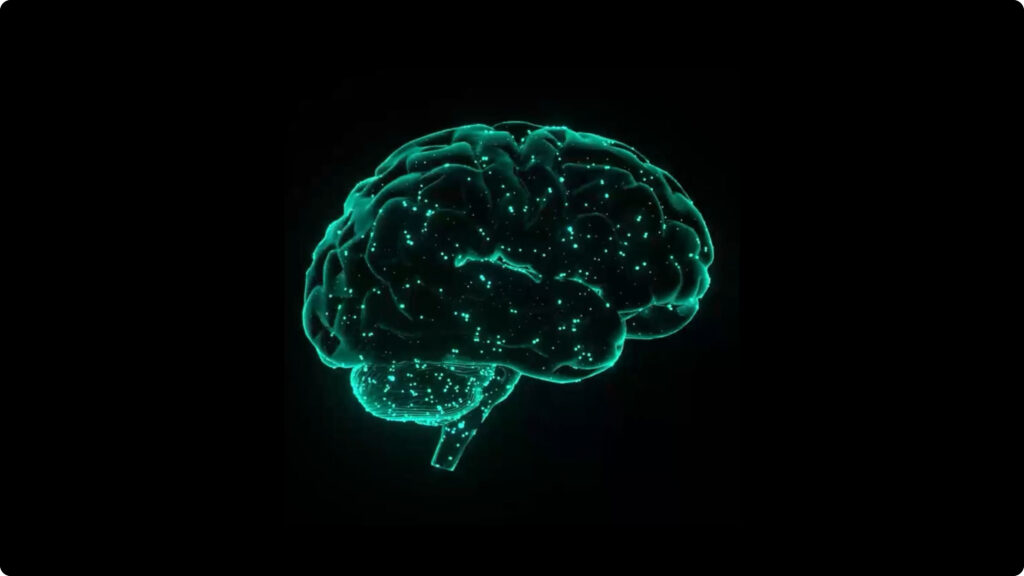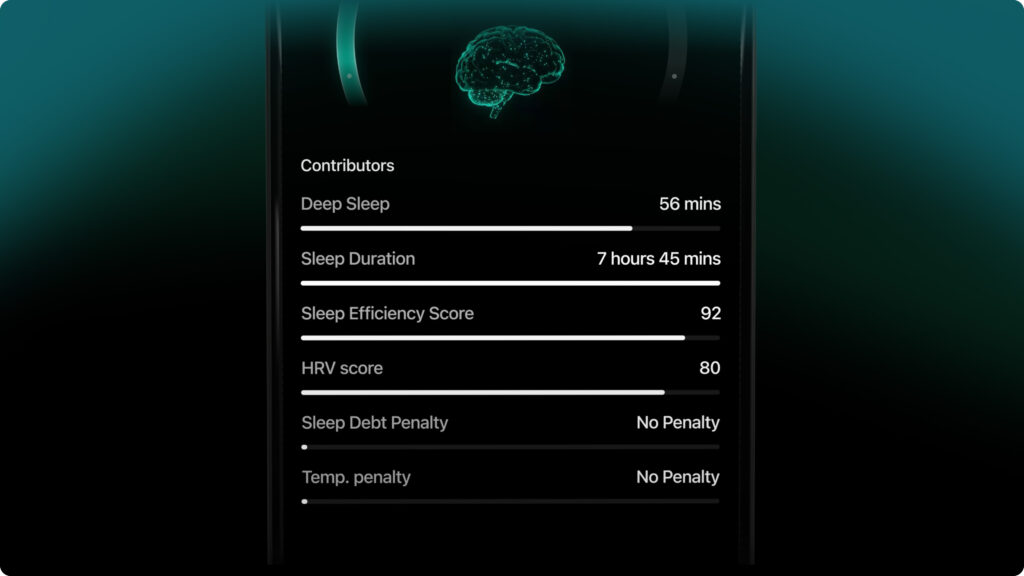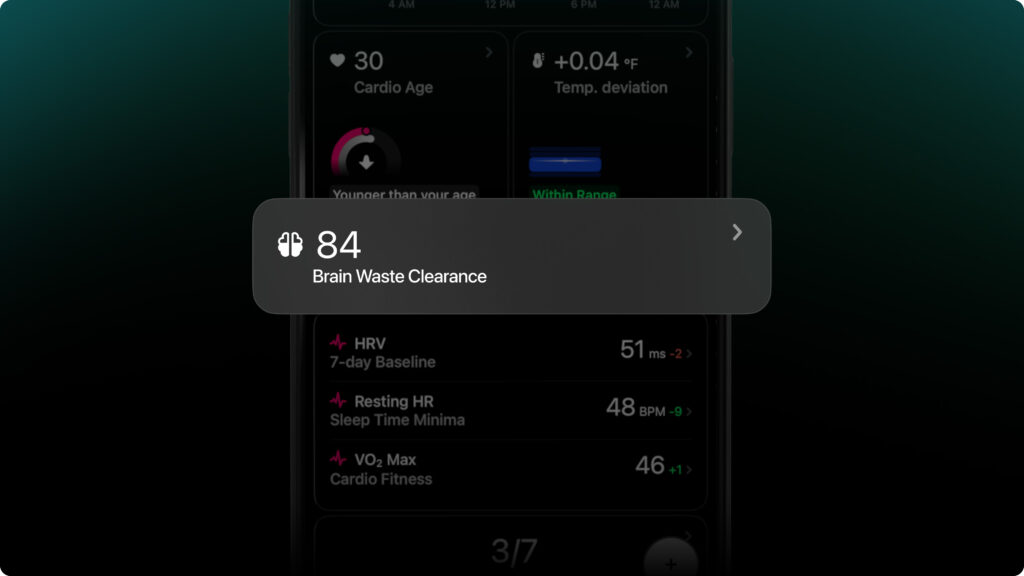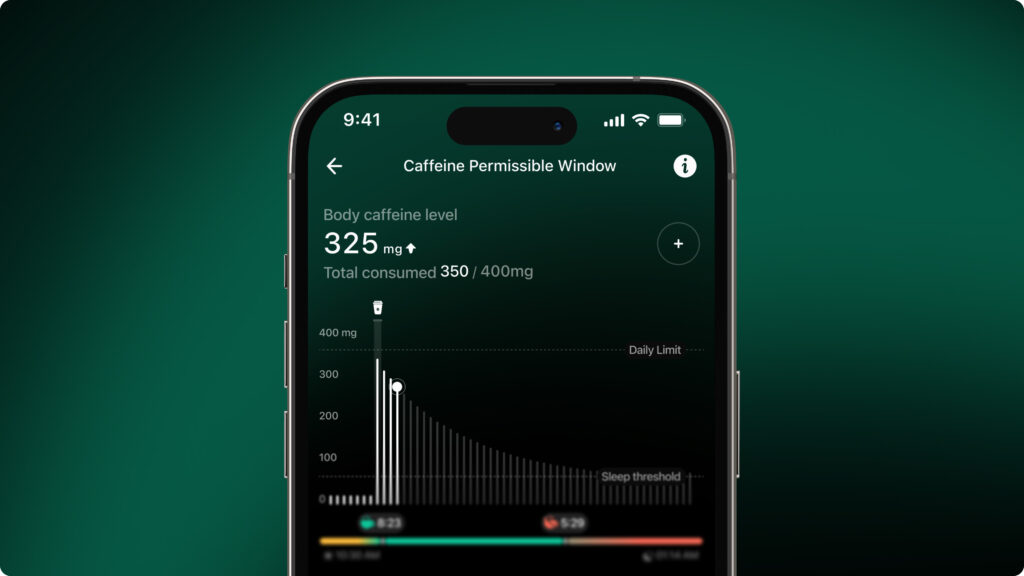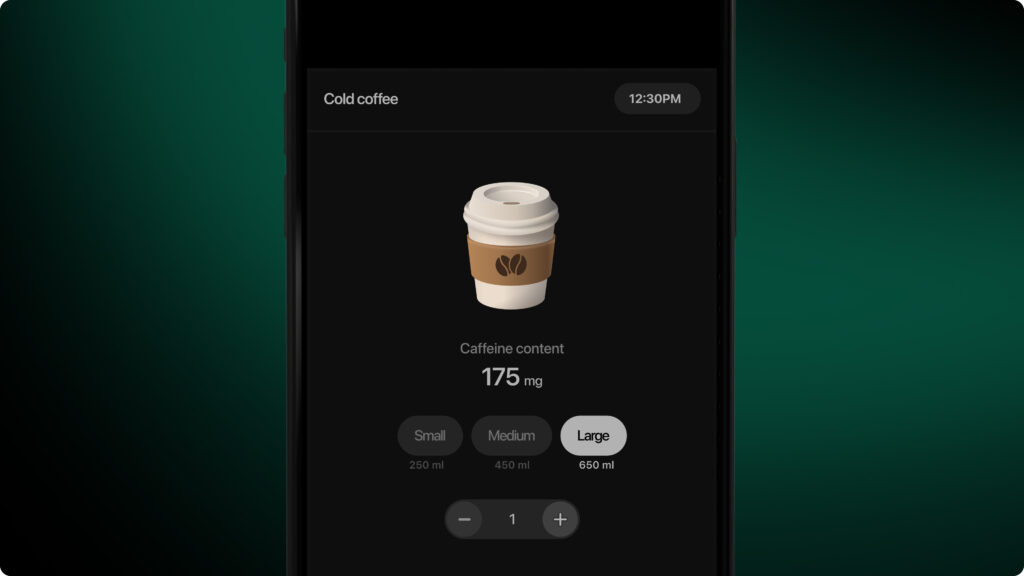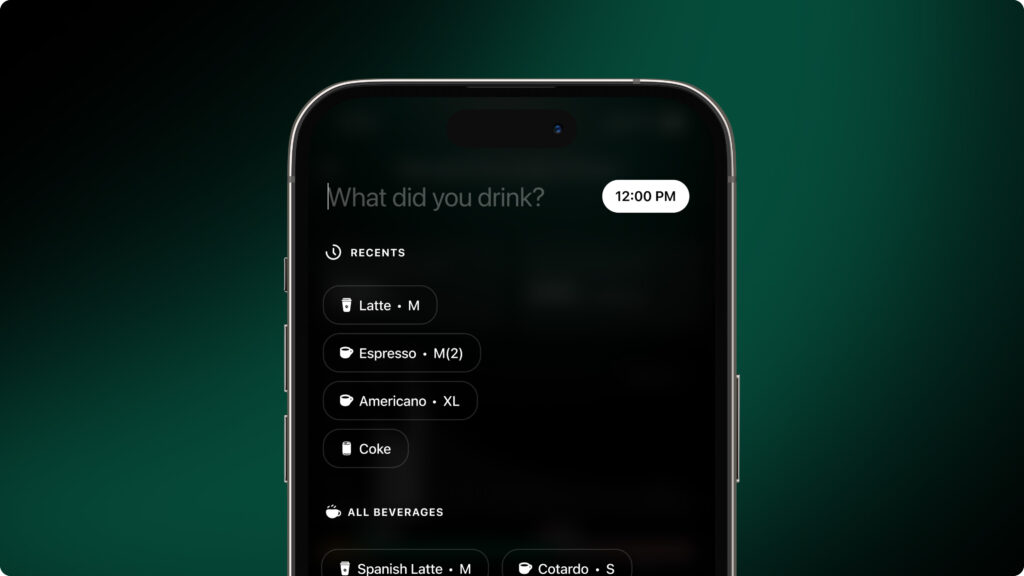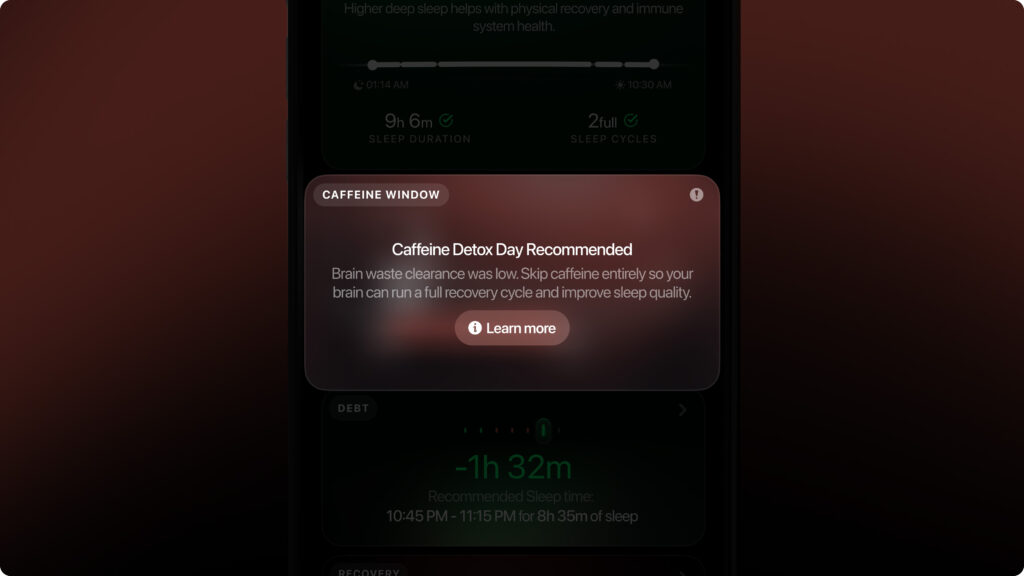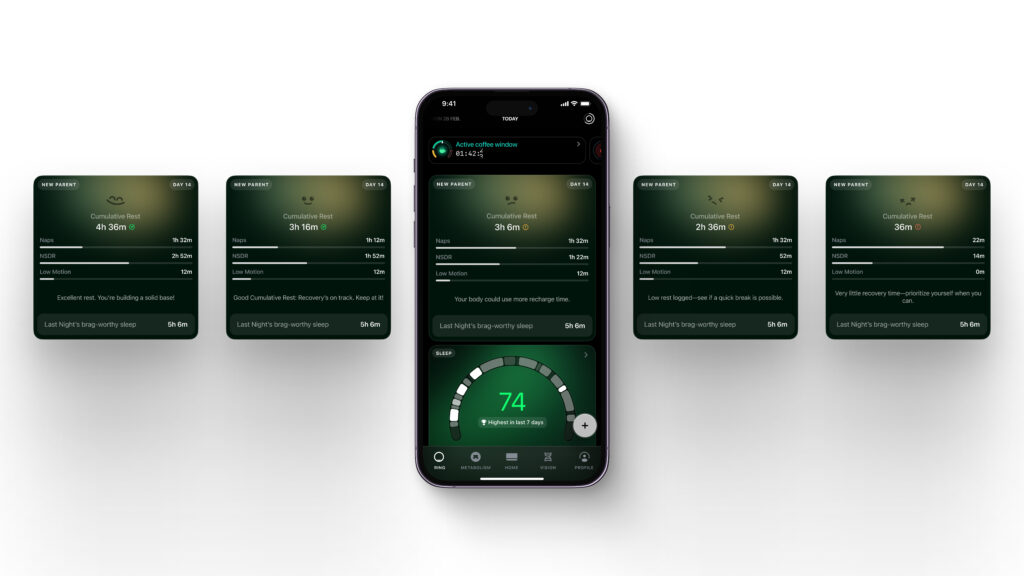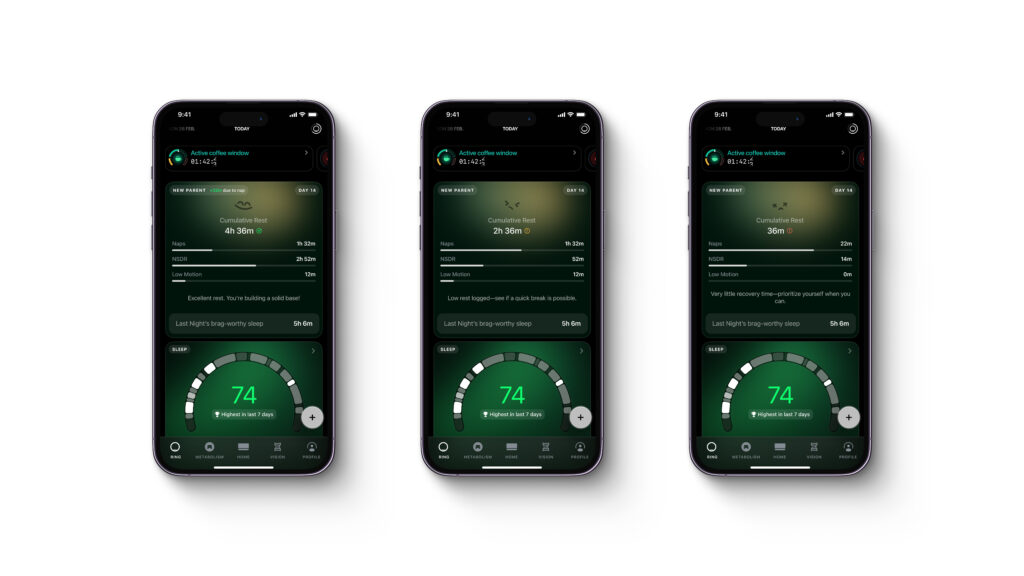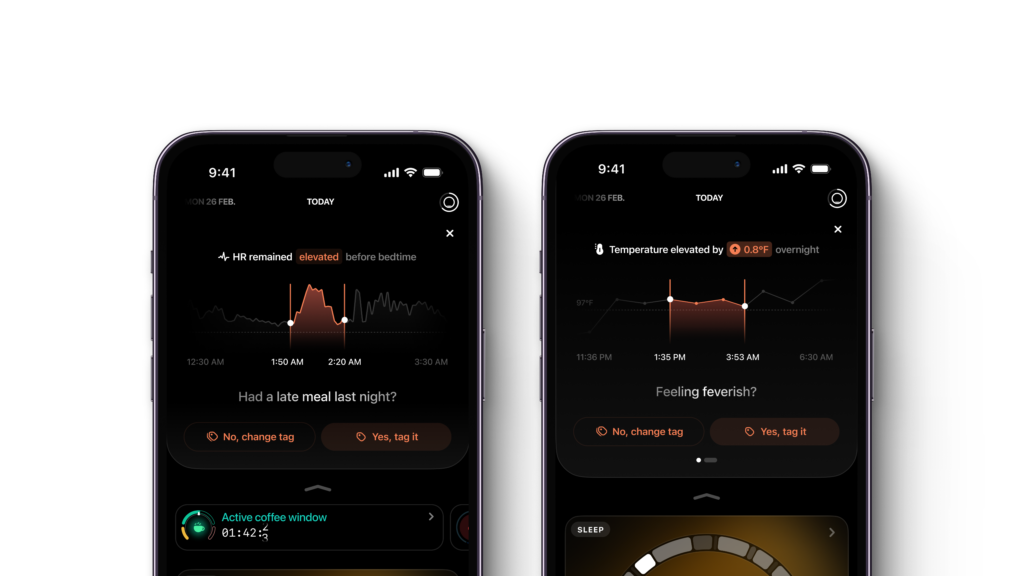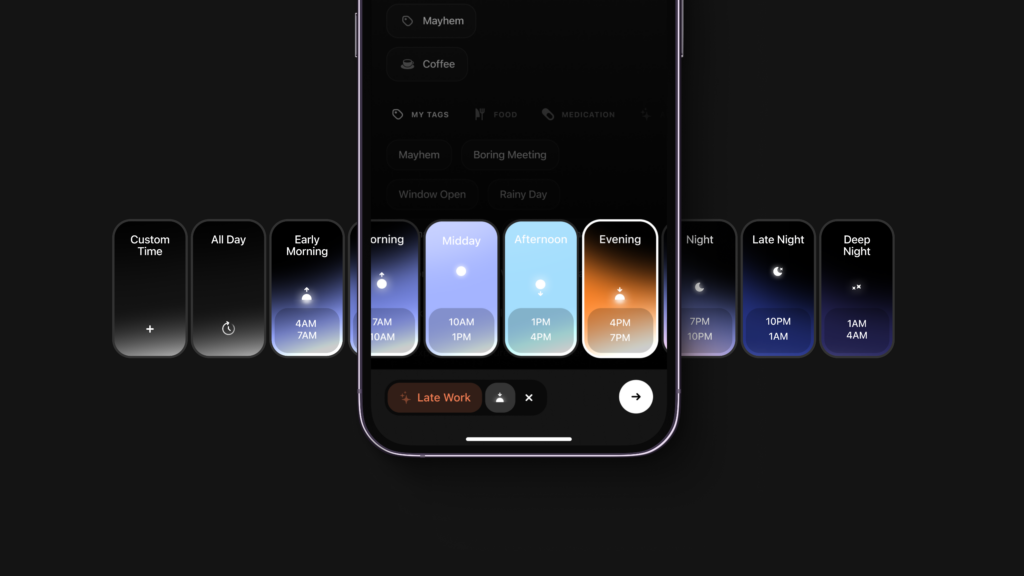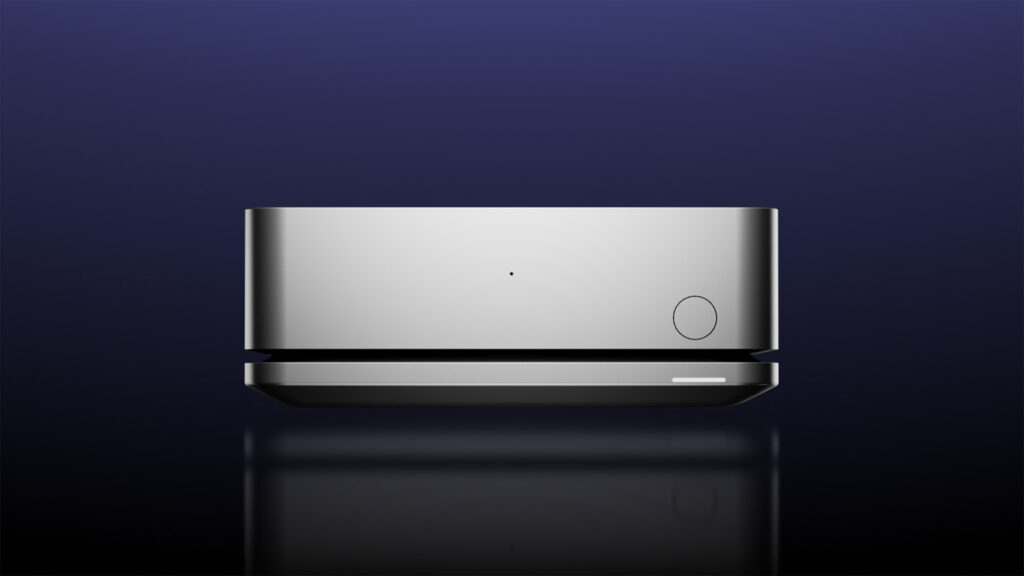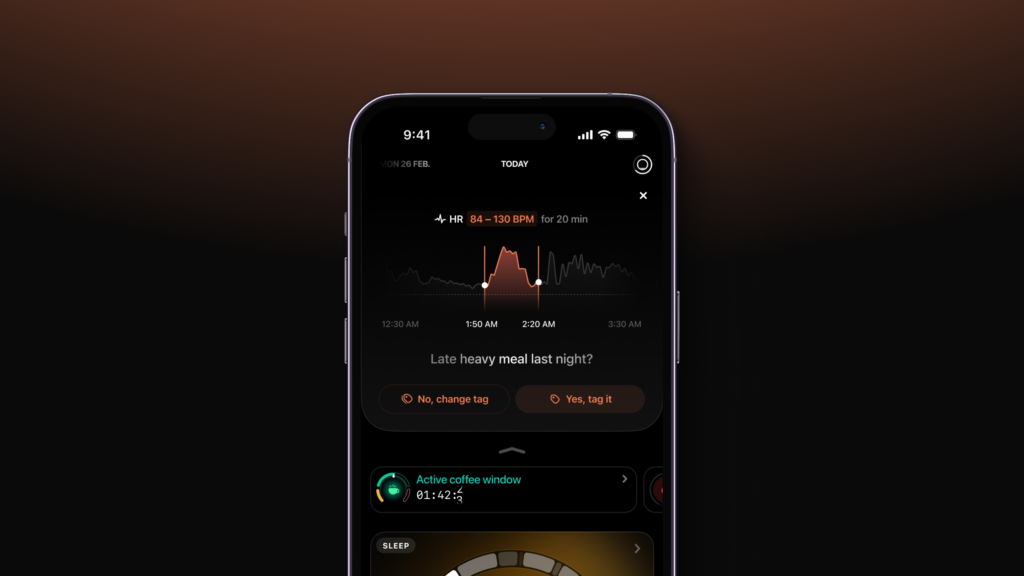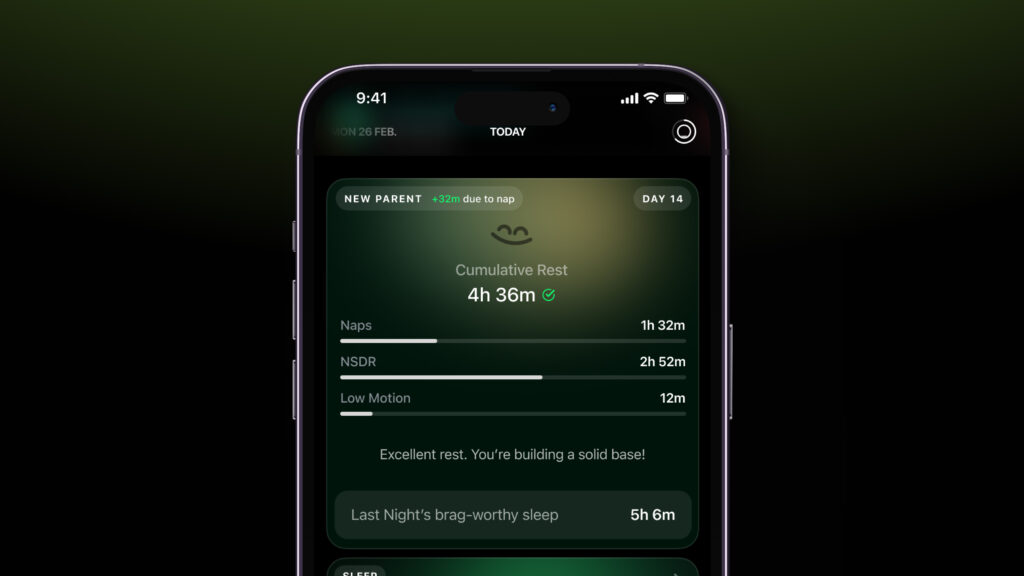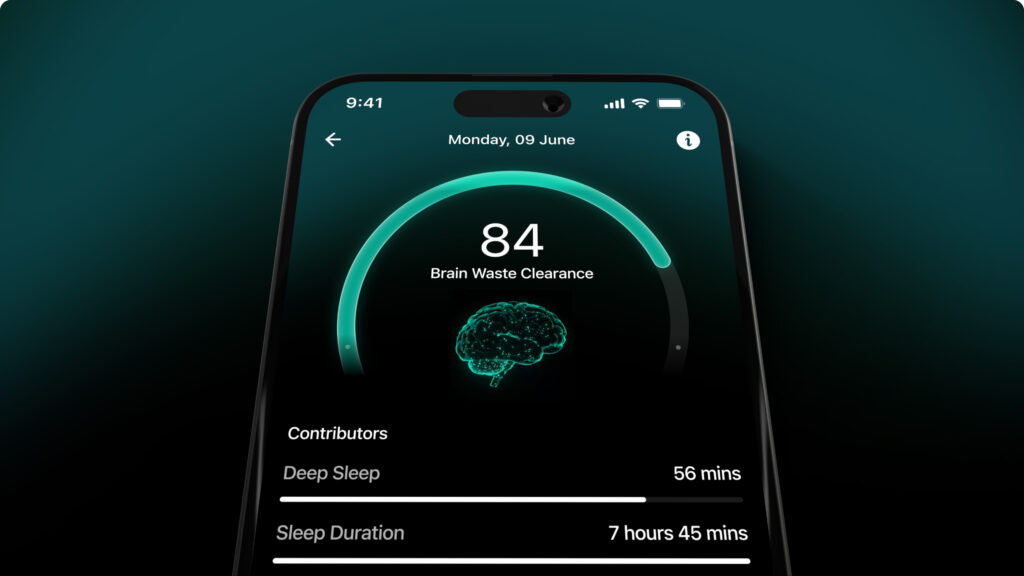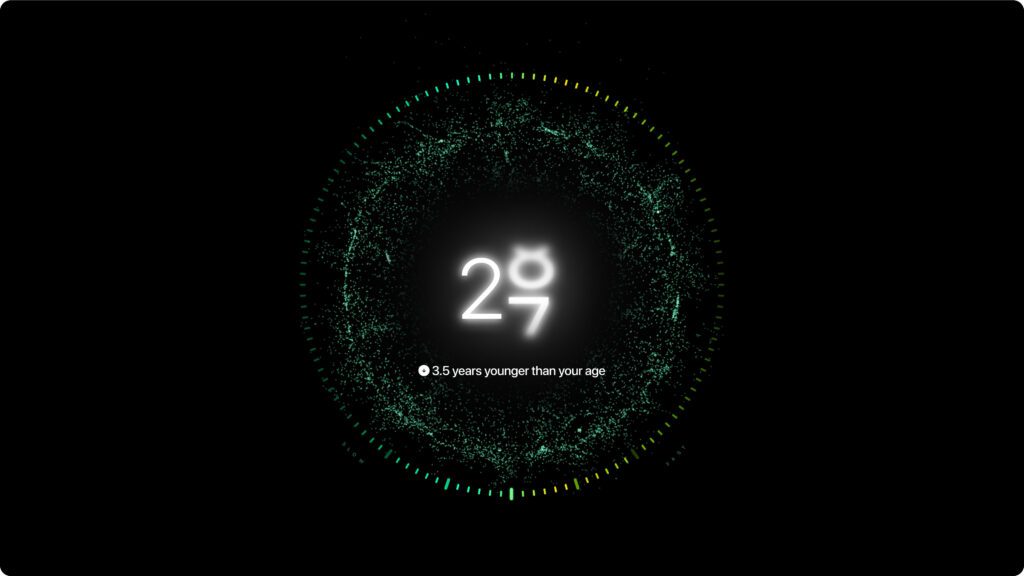Age is way more than just a number. Lifestyle and genetics can speed or slow biological aging, and understanding this can help you make meaningful differences to your health.
That’s the science behind Ultra Age, a unique and revolutionary combination of biomarkers that offer a window into how your body is aging. It combines sleep, cardiovascular signals, and blood markers into a single, trackable insight that offers the deepest possible look at your health.
Ultra Age reveals how behaviours today affect your tomorrow, and enables you to make informed decisions about the impact of lifestyle on your health.
Read next: All the new features landing in the Summer Release Sprint ’25
Ultra Age contributors
Ultra Age is a science-backed aging marker powered by your physiology. It’s a single insight combined from your Brain Age, Pulse Age, and Blood Age. This insight can help you track how lifestyle changes, sleep, exercise, and nutrition impact your aging trajectory.
Brain Age
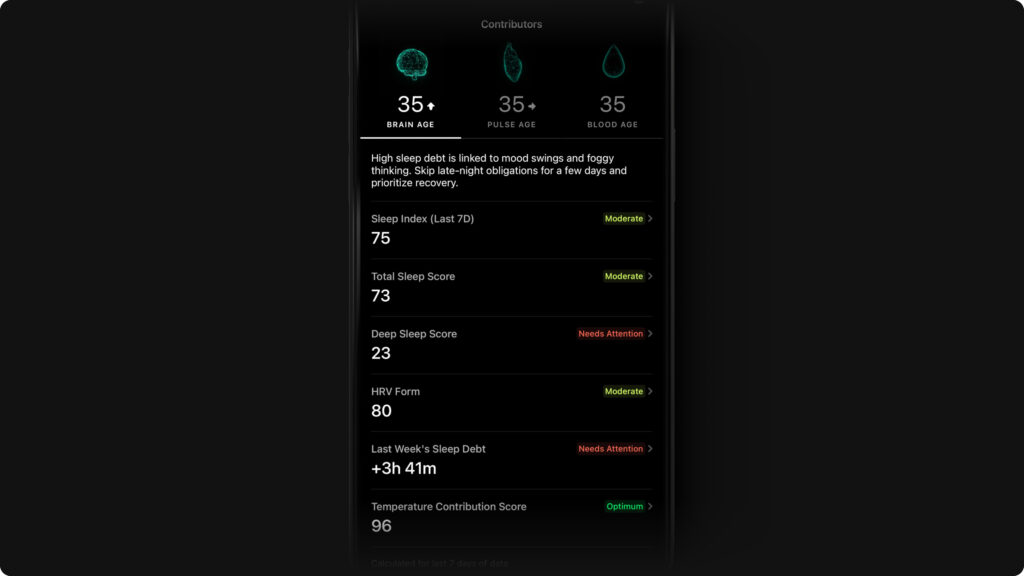
Calculated using Ultrahuman’s Brain Waste Clearance marker, which estimates how your brain resets itself during deep sleep. Poor sleep or disrupted HRV can impair this process and accelerate neurological aging. A lower Brain Age means stronger glymphatic clearance, better neural recovery, and improved long-term brain health.
Pulse Age
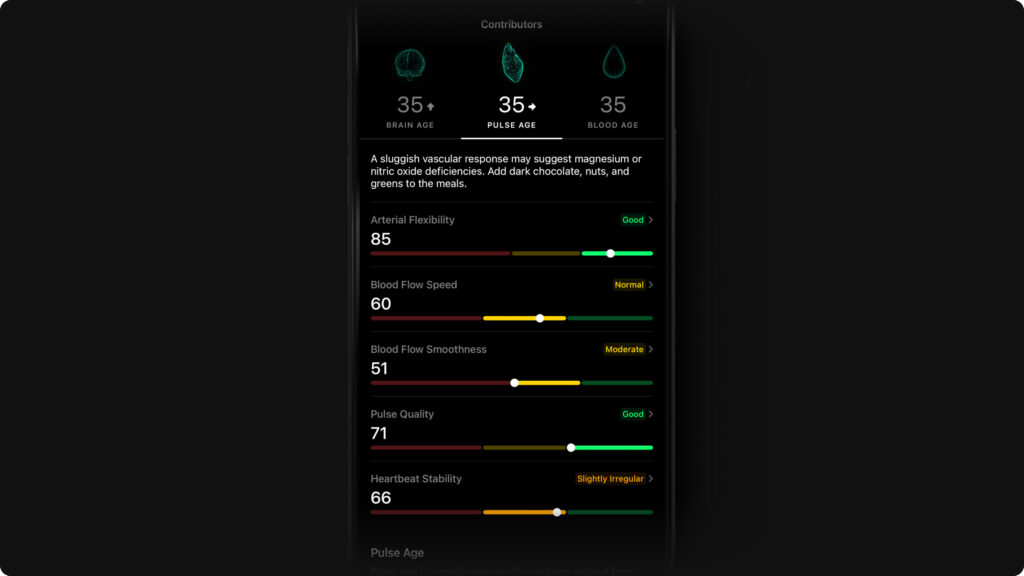
Ultra Age incorporates arterial flexibility analysis via the PPG sensor to understand how your body is aging. Arterial stiffness is associated with poor cardiovascular health and carries an increased risk of heart disease and stroke. But it can be improved with lifestyle interventions, including diet and exercise.
Pulse Age combines arterial flexibility with heartbeat stability, blood flow speed and smoothness, as well as pulse quality data, for a deep look at how your vascular system is aging. A lower Pulse Age means your arteries are in good shape.
Blood Age
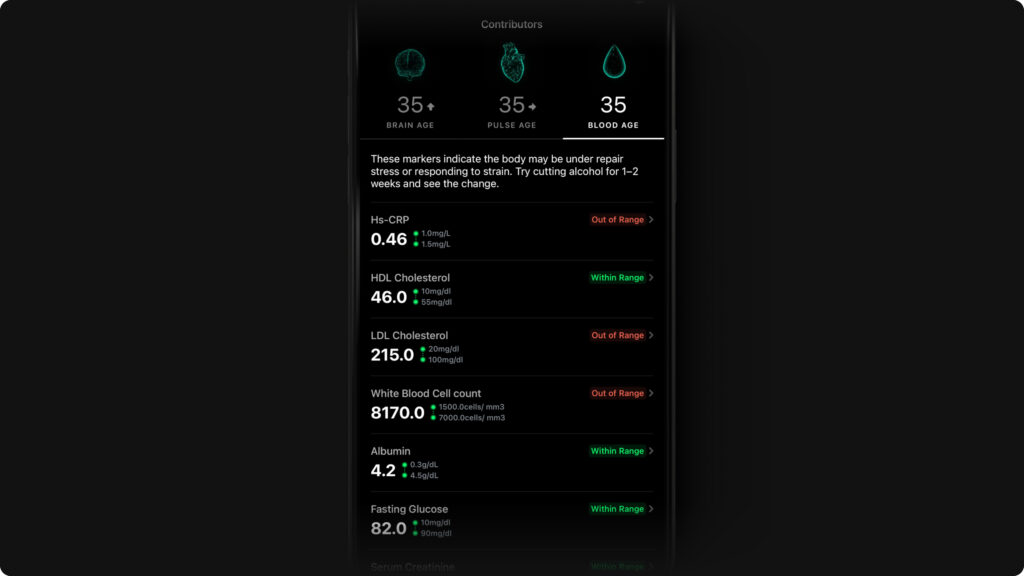
Available if you’ve completed a Blood Vision test (US and India), Blood Age is your body’s internal health scorecard, derived from key blood biomarkers like CRP (inflammation), LDL/HDL (lipid profile), glucose (metabolism), and WBC (immune balance).
It’s a composite measure of over a hundred biomarkers that analyze how your organs, cells, and systems are performing.
A younger Blood Age suggests healthier metabolic function and a lower risk of age-related disease.
Track your speed of aging
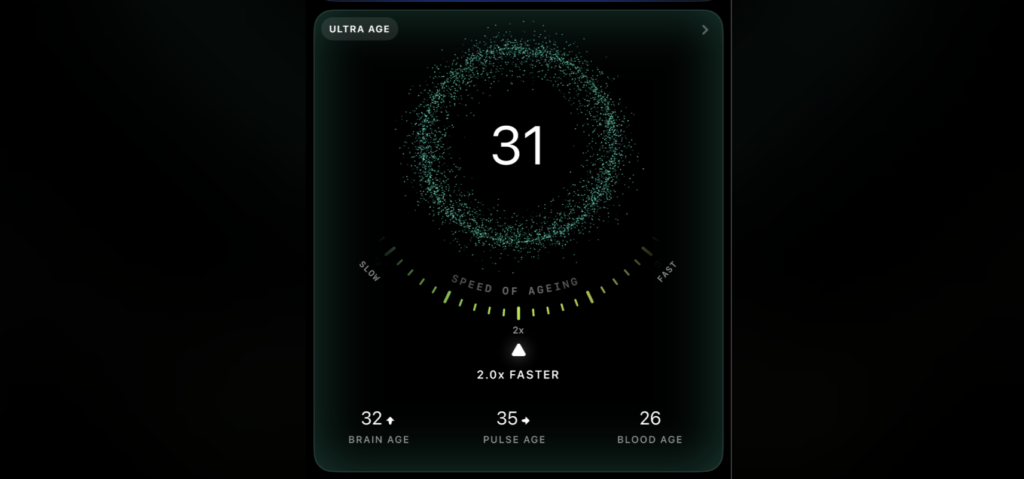
Alongside your current Ultra Age, you’ll also see your speed of aging. This scale reveals whether you’re aging faster or slower than your chronological age, based on your profile.
The speed is updated as your underlying contributors shift. If your brain and cardiovascular recovery improve, you may see your speed drop, indicating a reversal in stress-related aging. If sleep debt accumulates, HRV drops over sustained periods, and a Blood Vision test reveals inflammation markers, your speed of aging may speed up, offering a prompt to intervene early.
Where to find Ultra Age
You’ll find the Ultra Age tile in the Ultrahuman Ring app homepage. It will show your overall Ultra Age and your speed of aging.
You can tap on the tile to view contributors such as Brain Age, Cardio Age, and Blood Age, and their weightage. This also includes your current rate of aging.
Tapping on any contributor opens a detailed page showing top influences to your Ultra Age score, and what you can do to improve it.
Summary
Aging isn’t a static number. It responds to sleep quality, stress levels, cardiovascular strain, and nutrition. Ultra Age brings these signals together to help you track your health trajectory in real time, not just in years, but in meaningful physiological changes.
With Brain Age, Cardio Age, and Blood Age feeding into a single, transparent metric, Ultra Age gives you a more complete view of how you’re doing – and where to focus next.




